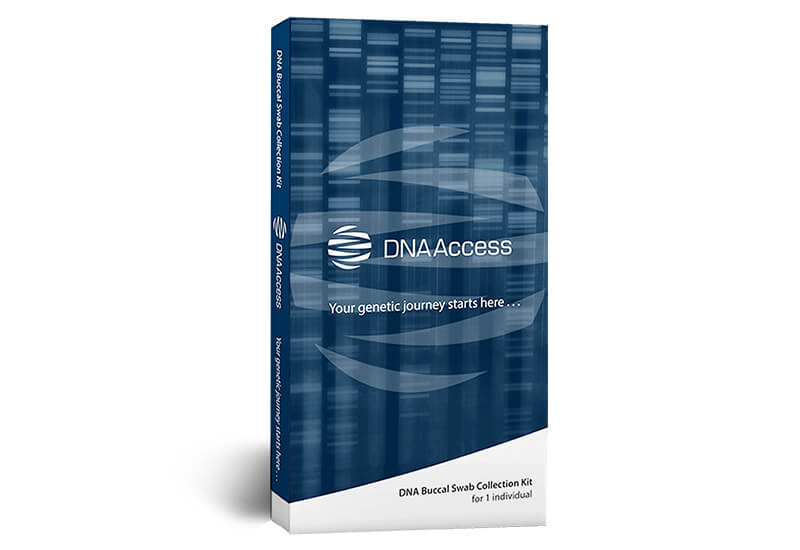Description
A balanced nutritional intake is essential for a healthy body and mind. Adequate levels of vitamins and minerals are needed for growth, repair and maintenance of the human body. Deficiencies increase the risk of certain diseases and lead to numerous health issues, such as vision problems, reduced immunity, brittle bones and cognitive decline. Many genetic variants have been identified that influence how well we absorb, activate and utilize specific vitamins and minerals. This genetic analysis identifies several of these changes and is a useful tool to help ensure a healthy nutritional status.
TURNAROUND TIME
SAMPLE TYPE
AGE REQUIREMENT
GENDER
Test Details
Vitamin A
Vitamin A is important for vision, immune function, skin health, bone growth and reproduction. Vitamin A is obtained in our diet from animal sources (as the retinol form) and plant sources (predominantly as beta-carotene). Beta-carotene is found in fruits and vegetables, particularly those that are orange-red in colour (e.g. carrots, pumpkins and sweet potatoes). Vitamin A deficiency is common in poorer countries, but rare in developed countries. Night blindness is an early symptom of vitamin A deficiency. More severe symptoms include serious eye problems, keratinization of the skin and mucous membranes in the respiratory, gastrointestinal and urinary tracts, impaired immunity and death in young children.
BCO1
The beta-carotene oxygenase 1 (BCO1) enzyme is responsible for converting beta-carotene into active vitamin A. BCO1 may also be referred to as BCMO1 (beta-carotene monooxygenase 1), but recent evidence indicates that it is a dioxygenase, rather than a monooxygenase. Four common changes in the BCO1 gene explain much of the considerable variation in vitamin A levels between individuals. These inherited changes affect the activity of the BCO1 enzyme and influence the availability of active vitamin A. Individuals that are slow converters (decreased BCO1 activity) are at risk of vitamin A deficiency, and it is important for these people to consume more animal-sourced vitamin A (retinol form). The retinol form of vitamin A does not require BCO1 to convert to an active form.
B Vitamins
There are eight different B vitamins that have important roles in our body, and these vitamins often work together for common functions. For example, vitamin B2 (riboflavin) is required as a cofactor of methylenetetrahydrofolate reductase (MTHFR) for the activation of vitamin B9 (folate). Vitamin B deficiencies are very common worldwide, and can lead to serious health problems.
B6
Vitamin B6 exists in several different forms and acts as a cofactor in a wide variety of roles, particularly protein metabolism. Vitamin B6 is important for cognitive development (through neurotransmitter synthesis), immune function (by promoting white blood cell production) and hemoglobin formation. Vitamin B6 is found in high quantities in chickpeas, fish, beef liver, starchy vegetables and non-citrus fruits. Severe vitamin B6 deficiency is uncommon, but can occur in conjunction with other vitamin B deficiencies. Kidney disease, autoimmune disorders and digestive problems (e.g. Crohn’s disease) can also cause vitamin B6 deficiency. The symptoms include depression, confusion, diminished immunity, anemia and dermatitis.
NBPF3
Two recent genome-wide association studies have identified a variant in the NBPF3 gene, which is linked to an increased risk of vitamin B6 deficiency. The function of the protein encoded by the NBPF3 gene is currently not fully understood, but it is located nearby to the ALPL gene, which plays a role in vitamin B6 catabolism.
B9
Vitamin B9 is more commonly known as folate (from food sources) or folic acid (as the stable form found in supplements and fortified foods). Vitamin B9 is essential for proper growth and development, and is important for the conversion of the toxic homocysteine amino acid to methionine. Dark green vegetables and dried legumes are good sources of folate. Folate deficiencies can result in pregnancy loss or birth defects, neurological defects, cardiovascular issues, and there is also increasing evidence for links to schizophrenia, dementia and Alzheimer’s disease.
MTHFD1
Methylenetetrahydrofolate dehydrogenase is an important enzyme in the metabolism of folate and variants in the MTHFD1 gene have been linked to folate-related disorders. Several studies have identified an association between a MTHFD1 variant and neural tube defects, but only when folate levels are low. Fortunately the risk of neural tube defects can be reduced in genetically susceptible individuals by obtaining adequate folate levels, either through diet or folic acid supplements.
MTHFR
Methylenetetrahydrofolate reductase is required for the activation of folate, along with ribloflavin (vitamin B2) as a cofactor. Mutations in the MTHFR gene affect the activation of folate and lead to lower levels of active folate circulating in the body. People who carry a variant of MTHFR are more likely to be severely affected by a low folate or riboflavin intake. Dark green vegetables and dried legumes are good sources of folate, along with foods that have been enriched with the synthetic form (folic acid). Dairy products are the richest source of riboflavin.
B12
Vitamin B12 (cobalamin) is necessary for the normal functioning of the brain and nervous system. It is required for DNA synthesis, and the metabolism of fatty acids and amino acids. Fish, meat, poultry, eggs and milk are rich sources of vitamin B12. The symptoms of vitamin B12 deficiency include fatigue, depression, poor memory, anemia and a loss of appetite. A severe deficiency can lead to irreversible neurological damage. Vegetarians and vegans, as well as people with digestive problems, are at a higher risk of vitamin B12 deficiency.
FUT2
The FUT2 gene encodes part of a galactoside fucosyltransferase enzyme, which is part of a complex involved in host-microbe interactions. Individuals that carry the secretor variant of the FUT2 gene, express this immune complex (known as H-antigen) on their intestinal cells, while non-secretors do not. The presence of this immune complex affects the bacterial composition of the intestinal tract. Secretors have higher levels of “good” bifidobacteria, compared to non-secretors. However, non-secretors have the advantage of an increased resistance to the most common norovirus (GII.4) and they are less likely to be infected by “bad” H. pylori bacteria. H. pylori infections cause a reduction in a molecule that is important for vitamin B12 absorption. Therefore, non-secretors are more likely to have adequate vitamin B12 absorption, as their intestinal tract is less likely to be infected by H. pylori.
Vitamin C
Vitamin C is a nutrient that must be obtained from our diet, as humans are unable to synthesize vitamin C (unlike most animals). Foods that are high in vitamin C include dark leafy vegetables, citrus fruits, broccoli, berries and tomatoes. Vitamin C deficiency leads to scurvy. Early signs of scurvy include malaise and lethargy, and if deficiency persists, symptoms include inflamed and bleeding gums, nosebleeds, dry hair and skin, decreased wound healing rate and lowered immunity. Severe symptoms include jaundice, edema, fever, convulsions and eventually death.
SLC23A1
The absorption of vitamin C and distribution around the body requires two transporters. A common variation in one of these transporters (encoded by the SLC23A1 gene) is associated with decreased vitamin C absorption and distribution. Individuals that carry this variant have an increased risk of vitamin C deficiency.
Vitamin D
Vitamin D is a fat-soluble vitamin required for the absorption of other nutrients, particularly calcium and phosphate. Vitamin D is required to modulate cell growth, aid in immune functions, decrease inflammation and maintain normal bone growth and remodeling. Ultraviolet B radiation (from sunlight) triggers the synthesis of vitamin D in the body. Vitamin D can also be obtained from some foods, including fatty fish, fish liver oils and fortified foods (e.g. infant formula, milk and cereals). Vitamin D can be stored in the liver and fat tissues allowing for a continuous supply during the months of lower sun exposure. However, many groups are at risk of vitamin D deficiency and the associated symptoms (thin, brittle, misshapen bones, osteoporosis and rickets). Those at risk include people with limited sun exposure, the elderly (due to a lower rate of vitamin D synthesis), dark skinned people (as increased melanin prevents the activation of vitamin D synthesis) and people suffering from poor fat absorption (due to disease such as inflammatory bowel disease).
CYP2R1
Vitamin D from the diet or triggered by sun exposure must be converted to the physiologically active form (calcitriol) by a two-step process. Cytochrome P450 2R1 (CYP2R1) is the enzyme responsible for the first conversion step from vitamin D to calcidiol. Variants of this enzyme are associated with reduced enzyme activity and reduced levels of active vitamin D.
GC
The vitamin D binding protein (encoded by the GC gene) is required to transport active vitamin D around the body and into the cells. Variations of this protein reduce the efficiency of vitamin D transport and cellular uptake.
Vitamin E
Vitamin E compounds are fat-soluble antioxidants known as tocopherols and tocotrienols. High levels of these molecules are found in nuts, seeds and vegetable oils. Alpha-tocopherol is the most active form of vitamin E and functions to promote the immune system, healthy eyes and skin, as well as a number of other metabolic processes. Low alpha-tocopherol levels are linked to an increased risk of disability and cognitive decline in the elderly.
APOA5
APOA5 encodes an apolipoprotein that helps control plasma triglyceride levels, high-density lipoprotein (HDL) maturation and cholesterol metabolism. Lipid-rich micelles (such as apoliproteins) are also required to transport vitamin E into the cells, and a genetic variant in the APOA5 gene has been shown to influence alpha-tocopherol levels.
Omega
Omega-3 fatty acids, found in plant and fatty fish oils, are important for normal, healthy metabolism. These fatty acids are associated with a reduced risk of cardiovascular disease, which is likely due to the ability of omega-3 to reduce blood triglyceride levels. Although additional omega-3 supplements can reduce triglyceride levels in some individuals, others do not observe any noticeable health benefits. This response variation is linked to changes in the NOS3 gene.
NOS3
NOS3 encodes nitric oxide synthase, which is required for the production of nitric oxide. Nitric oxide is a signaling molecule that plays a protective role in the cardiovascular system, by regulating blood pressure, vasodilation, vascular smooth muscle proliferation, vascular repair and platelet aggregation. A nucleotide variation in the NOS3 gene affects the levels of nitric oxide production. This variant has been linked to an increased risk of hypertension, heart disease and stroke in many Asian populations, but the association is not clear in other ethnicities. A 2010 study (Ferguson JF et al., Atherosclerosis) showed an association between this NOS3 genetic change and the varying response to omega-3 supplementation. Individuals that carry the minor allele (less common variant) have an increased risk of elevated triglyceride levels if they do not consume enough omega-3. However, these same individuals are also more responsive to omega-3 supplements as a way to lower their triglyceride levels and reduce their risk of cardiovascular problems.
Iron
Iron is required to make hemoglobin – an essential protein that transports oxygen around the body. Iron is obtained from both meat and plant sources and is transported by transferrin to other tissues around the body. When blood iron levels are low, an important signaling pathway is activated that reduces hepcidin levels. This hepcidin reduction allows more iron to be absorbed through the intestine (from the diet) and initiates the release of iron stores in the liver and spleen. Iron deficiency is a very common problem around the world. Symptoms include general fatigue and weakness, pale skin, dizziness and headaches.
TMPRSS6
The TMPRSS6 gene encodes matriptase-2, one of the components of the hepcidin-controlling signaling pathway. Specific changes in the TMPRSS6 gene affect this signaling pathway and influence how much iron is absorbed from the diet and released into the blood stream. Very rare changes are severe and prevent the production of any matriptase-2 and cause severe iron-deficiency anemia. However, there are also more common variants that are associated with milder forms of iron-deficiency. These variants are associated with decreased matriptase-2 production; hence hepcidin regulation is not controlled efficiently. When this individual has low blood iron levels, hepcidin production remains high. This prevents the normal iron absorption in the intestine and the normal release from iron stores in the liver and spleen.
TF
The TF gene encodes transferrin, the transporter of iron around the body. Changes in the TF gene influence iron transport and contribute to iron deficiency. One particular variant is associated with elevated transferrin levels that do not have any bound iron, so less iron is transported around the body. This increased risk of iron deficiency has been identified in several European populations, but the same association was not observed in two recent studies of elderly Chinese and African populations.





